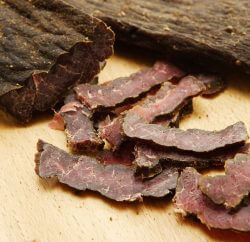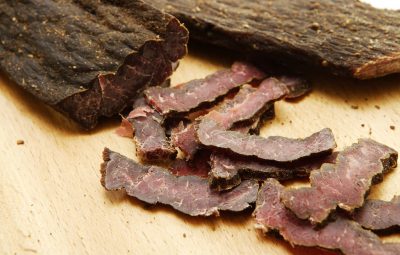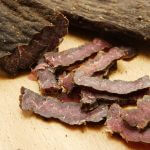There’s nothing more frustrating than throwing away produce that has gone mushy, moldy, tasteless, or droopy before you had a chance to eat it. Fruits and vegetables are expensive! It’s hard to throw away those healthy foods that you had such good intentions of eating. Packing in those servings of fruits and vegetables is hard enough as it is without feeling like you only have a small window of time before the plant is inedible, or at least, less appetizing. There is something you can do however, to make sure your produce is lasting as long as possible while preserving taste and nutritional quality! Below you will find some of the most commonly thrown-out foods and strategies to store them so you can guarantee you are maximizing your food (and nutrient) dollar!

Fresh greens: The ultimate health food, with the shortest “shelf-life” is undoubtedly lettuce. A head of your favorite greens won’t last very long if you bring it home and store it as is. Too much moisture will turn the leaves soggy while not enough moisture results in wilting. For fresh, crisp lettuce, kale, and spinach that lasts for a week or more in the crisper drawer, use the following method. First, rinse the leaves in cold running water to restore turgidity and clean them off. Once clean, fully dry them. This is crucial! Little pockets of water droplets will increase the speed of rotting as leaves won’t have adequate respiration. Use a salad spinner (highly recommended, as it won’t damage the leaves) or pat dry with a paper towel and leave out on a drying rack with plenty of circulation. Once dry, add the leaves to a sealable plastic bag with a dry paper towel that will wick away moisture as they age. Zip the bag shut then pierce the bag with little pinpoint holes (or use a fork) so the lettuce can breathe. Store in your crisper drawer and replace the paper towel if necessary every few days.

Berries: Another one of the most nutritious foods we can get our hands on also has a short life; fresh berries. The other problem with fresh berries is they are usually expensive and are cheapest when bought in bulk. You buy a large amount hoping to get through them all before they go soft, moldy, or dry but in the end you still lose money. If you feel like splurging for fresh berries isn’t worth your time, try using frozen berries instead. Frozen berries in many instances can be more nutrient-packed than fresh! Berries are often picked at the peak of ripeness (when nutrients are also the most plentiful) and flash frozen immediately. They retain more nutrients than berries that are picked before ripeness and shipped across the country. As a bonus, they don’t go bad nearly as fast! Frozen berries can be kept in the freezer for up to 10 months! When you have your heart set on consuming fresh berries, there are a few strategies that can be used to keep them fresh for longer. When returning from the store or a farmers market, place the berries in the refrigerator to help them firm up (this helps protect them while rinsing). Once cooled through, place berries in a vinegar bath (1/2 cup white vinegar to 4 cups very cold water) to kill any bacteria and mold spores. Drain the berries and dry them completely with paper towels before storing them in a slotted container/colander with a paper towel to wick away moisture. Place on a shelf in the fridge rather than in a crisper drawer.

Avocadoes: Avocadoes made the list because most people end up buying them in bulk to save money and only eat a few of them at their peak since they all ripen at the same time. There are a few strategies you can do slow or speed up ripening so that the avocadoes are perfectly soft and buttery when you want to cut them open. To speed up ripening by placing avocados in a brown paper back with an apple or banana. To slow down ripening, place in the refrigerator for a day or two before allowing it to ripen on the counter. A great strategy is to place two avocados on the counter, two in a paper bag, and two in the fridge so you have a staggered ripening process throughout the week. If you don’t end up eating the whole avocado, rub a little olive oil or lemon juice over any parts that are exposed to air and place in a sealable bag or cover with plastic wrap. This keeps the avocado from browning. A ripe avocado will stay good in the fridge for about 3 days.

Bananas: An overripe banana may not be the end of the world, since it’s a perfect addition to smoothies , banana bread, or frozen then blended into “nice-cream”…but some people love a nice green banana. When a banana is still green it has more resistant starch and a lower sugar content. As it ripens it gets easier to digest, higher in antioxidants, but also higher in sugar. If you like barely-yellow bananas these tricks can help you cut down your grocery runs to once a week. Bananas aren’t like avocados and can’t simply be placed in the fridge to slow down ripening. In fact, chilling a banana before it’s ripe can result in chilling injury which completely halts the fruit from ripening any further (even after being placed back in room temperature!) Instead, separate individual bananas from the bunch and wrap the stem in cellophane or aluminum foil. This will slow down the ripening process so you don’t get spotted bananas before you’re ready to eat them! If they get past the point of ripeness you prefer, simply throw them in the freezer to use later in anything from baked goods, banana pancakes, or smoothies. A banana frozen in its skin can last up to 4 months so you’ll never have to throw out a banana again!
These foods are nutrition superstars and should never be wasted! Use these helpful tips and you’ll never have to throw out expensive produce. Check out the following recipes for great ways to use up these common superfoods!
Originally found at https://www.coloursofnature.com/how-to-preserve-fruit-veg-being-tossed-away/


















